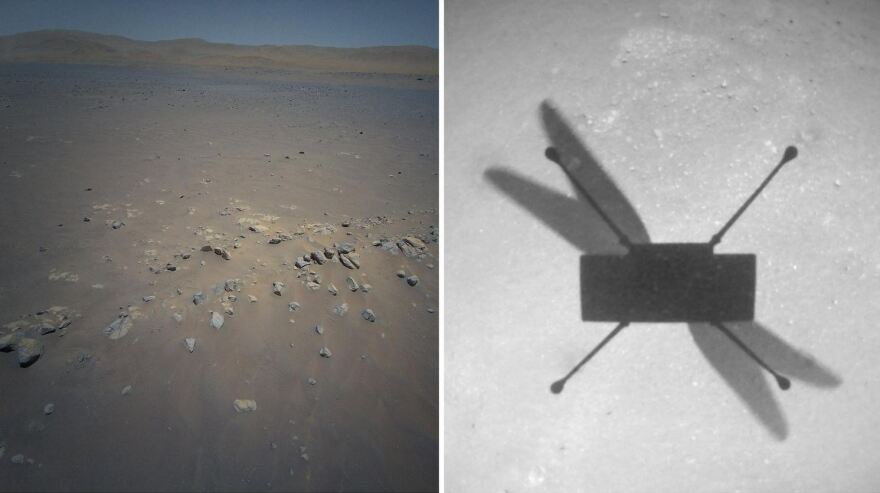We know if a helicopter was sent up in the sky, there must have been a good reason. Since their first mass production in 1942, these flying machines have captured human imagination and wonder. Unlike the great flying contraption invented by the Wright Brothers, helicopters seem to have been chosen for special missions from the start.
They played a key role late in World War 2, Korea and Vietnam. The Bell 47 became the first helicopter certified for civilian use in 1946 and they quickly took off in popularity. Soon they were tasked for such important uses as medical transport, law enforcement, search and rescue and firefighting.
With civilian use came dramatic improvements in range and technology. Seems it was only a matter of time before helicopters were considered an option for exploring other worlds. Plans for a Mars Helicopter eventually took shape. Traveling in the belly of the Perseverance Rover, the Mars Helicopter Ingenuity, landed in the Jezero Crater on February 18, 2021.
While rovers have explored the red planet for decades, scientists knew they could learn more about the complex Martian surface and geologic history if they could get off the ground. This is no easy task in the thin atmosphere of Mars. Conditions at 25 feet off the ground on Mars would be similar to those at 100,000 feet above the Earth.
On this first mission, the goal is to test and refine the technology for future missions. Ingenuity completed 3 successful test flights, the first taking place on April 19, 2021. It took off, climbed 10 feet, was able to hover briefly, completed a turn, and then safely landed. It was the first controlled flight in any world beyond Earth – a huge milestone.
Moving into its’ operations phase – Ingenuity has exceeded all expectations for success and has so far completed 13 flights. In early September, it captured color images from an altitude of just 26 feet off the ground. The first such pictures of a key geologic feature on Mars. Ingenuity will continue to provide valuable information for future missions, exploring how rovers and aerial explorers can work together, on Mars and possibly other worlds.
It’s clear that helicopters are sent up when the need is great, when the mission requires another view, another perspective. Whether on Earth or far away planets, we can be sure that helicopter technology will be part of our future explorations and travels.
- - -
Western Slope Skies is produced by the Black Canyon Astronomical Society. This episode was written and recorded by Park Ranger Nick Myers of Mesa Verde National Park.
Kids' activity - Make a paper Mars helicopter!


